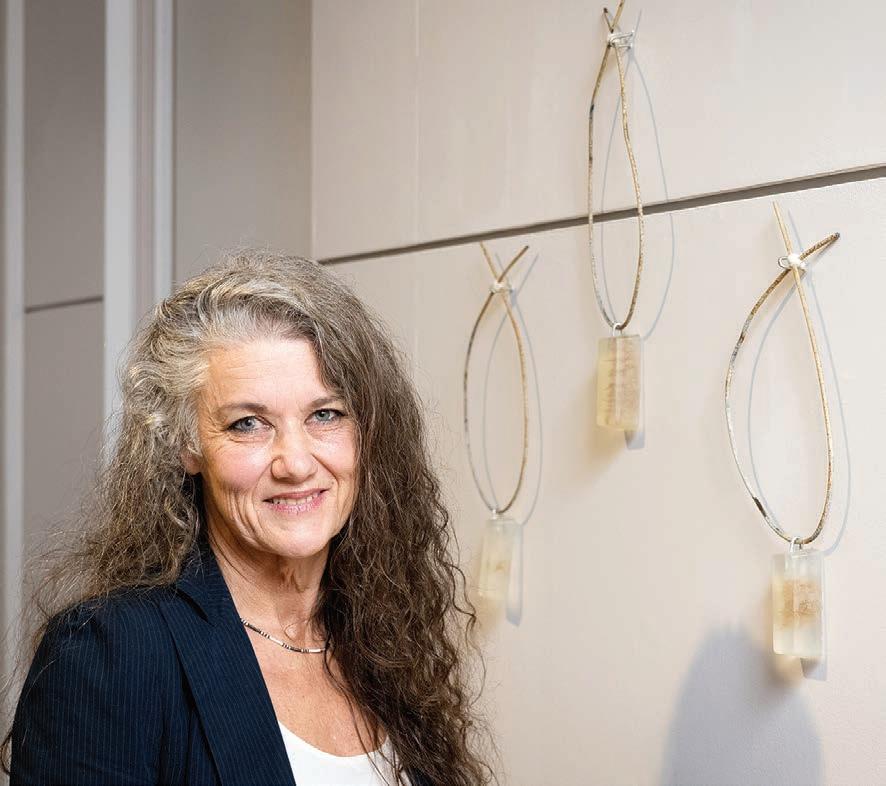
19 minute read
Entries open for national art award


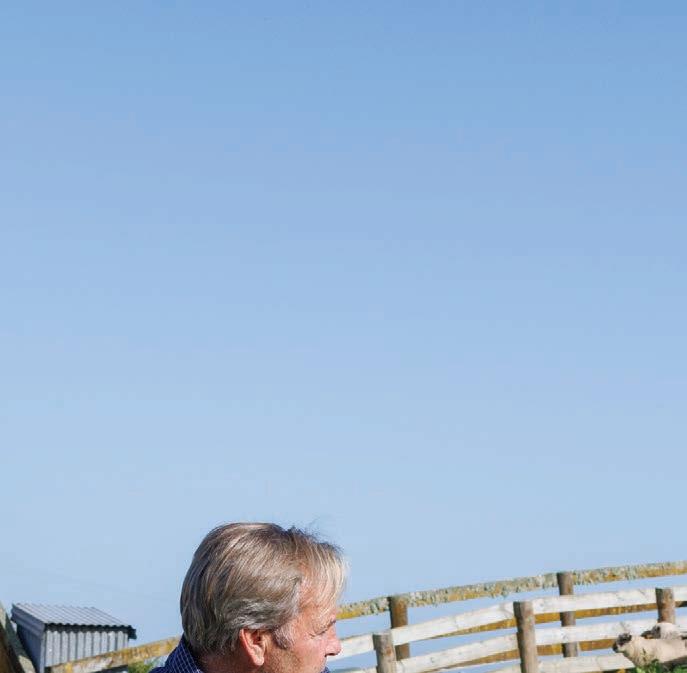
TOP SPOT: Last year’s winner of the Fieldays No.8 Wire National Art Award, Auckland artist Gina Ferguson, with her work titled Wear ‘n’ Tear.
Entries open for Fieldays art award
KIWI creatives are being urged to put their inspiring art forward for the Fieldays No.8 Wire National Art Award.
The prize pool is worth nearly $10,000 and entries for the annual awards are now open.
Hosted by Waikato Museum Te Whare Taonga o Waikato and supported by the New Zealand National Fieldays Society, the event has seen incredible talent manipulate the infamously difficult product into stunning works for sale.
Approaching its 25th year, the award is now recognised as a celebration of true ingenuity.
In 2022, the competition will be judged by carver, sculptor and multidisciplinary artist Eugene Kara.
With iwi affiliations to Ngāti Koroki Kahukura, Ngāti Pāhauwera, Ngāti Tāpā, Ngāti Kāata, Ngā Rauru, Te Ātihaunui-a-Pāpārangi, Ngāti Tūwharetoa, Te Arawa and Ngāti Kahungunu, Kara has been a practicing artist for 30 years.
In his time at the NZ Māori Arts and Crafts Institute (NZMACI) in Rotorua, he has established Te Ahi Komau, NZ’s first Māori foundry and bronze casting facility.
“It’s an honour to have Eugene on board to select the finalists and eventual winners of this year’s award,” Waikato Museum director of museum and arts Liz Cotton said.
“His artworks are recognised and admired around the region, including the commanding tekoteko column beside the Cambridge exit of the Waikato Expressway.”
“Over the years, we have been privileged to witness many artists’ work through these awards. We’re proud to continue our support providing a platform for expression of creativity and the grass-roots of agriculture in New Zealand, while also connecting a community of likeminded individuals,” NZ National Fieldays Society president James Allen said.
The prize pool comprises $7000 for first place; $1000 for second; and third place takes home $500. There are also two $100 ArtsPost vouchers up for grabs in the President’s Choice and People’s Choice categories.
Entries close at 1pm on Monday, March 14, and finalists will be notified in the week of March 21.
Winners will be announced on April 21, followed by a month-long exhibition (April 22- May 23) at Hamilton’s ArtsPost Galleries & Shop.
To read the competition criteria and access the entry form, go to www.waikatomuseum.co.nz/ no8wire
On theFence right now?

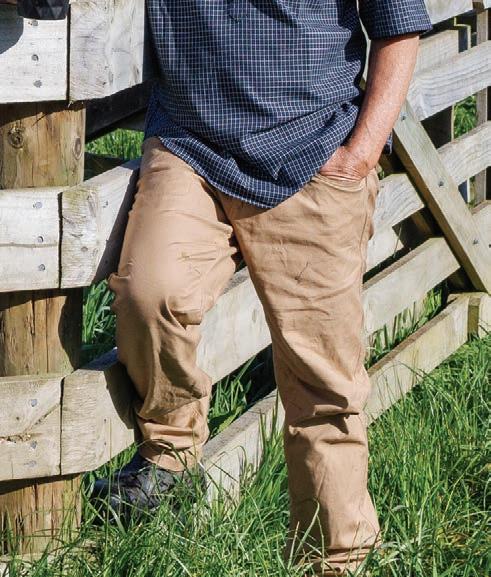

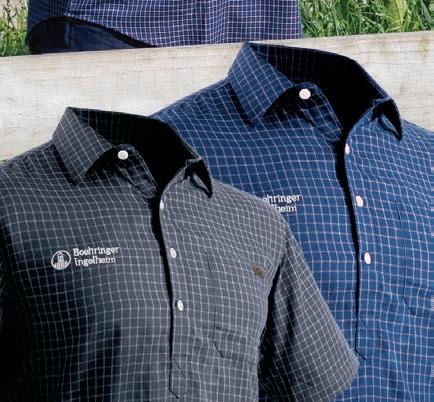
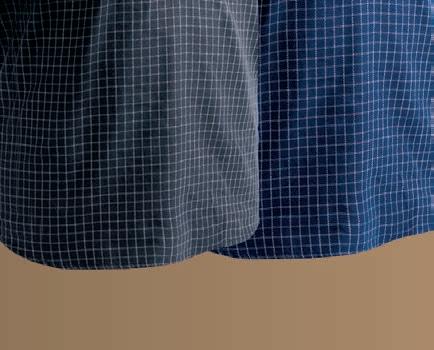

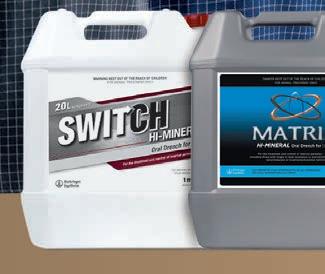
Boehringer Ingelheim and your vet are providing drench options to have your stock looking good again this season. And we’ll help you look good as well with the latest Degree shirts.
Purchase qualifying Boehringer Ingelheim sheep drench products for your stock this season and you’ll receive a FREE* Degree Horizon Shirt.
Ensure young stock become future high producers through improved health, growth and energy at: futureproducers.co.nz
News First round of new pest tech out
Richard Rennie richard.rennie@globalhq.co.nz
THE results of funding through the Predator Free 2050 project are starting to filter through to regions as new trapping and detection tech starts to take on a commercial head of steam.
Predator Free 2050 science director Dr Dan Tompkins is welcoming the first tranche of equipment that is the result of the original Provincial Growth Fund, which committed $19.5 million to pest control, of which $6.5m was specifically for developing new predator control technology.
The $6.5m was disbursed for investment in projects over three years, with 12 projects ultimately funded out of the 62 applications.
“The idea behind it was that we were to not only develop new tools for pest control, but to also build new businesses and expand job opportunities with the development of these tools,” Tompkins said.
The technology ranges from traps, toxins, lures to comms equipment, focused on improving or extending the capacity of some existing technologies.
The second tranche of funded projects are through the Jobs for Nature fund and are due to be announced in the coming months.
“At this point we cannot say too much about the second tranche, but the technology involves increased use of new and emerging technologies, including AI,” he said.
One of the successful first tranche-funded projects is Boffa Miskell’s low-cost, open-sourced automated system for dispensing lures to rodents that removes the labour costs involved in rebaiting long-lived traps in remote areas.
“Having something that is modulised and customised to different systems is currently our biggest challenge. There has been this big gap for a while that we have been developing in particular long-life tools,” he said.
Dr Helen Blackie of Boffa Miskell said while you may have a detection system that works for 12 months, “the big problem is we have had no lures that last that long”.
A highly sensitive back country detection camera has also been developed by Zero Invasive Predators and is shortly due to start commercial production.
A thermal camera coupled with software and remote reporting can identify predators and provide real-time notifications of encounters.
Now in place in South Westland, it is expected to reduce the cost of remote camera detection sixfold from $60 a hectare a year to $10/ ha/year.
“South Westland is currently our biggest single area of control, across 100,000ha,” Tompkins said.
He said he would like to see that area increase 10 times to one million hectare blocks across NZ by 2030, and remains optimistic such large areas can be achieved.
“We are now seeing some very effective tools being developed, many from just a relatively small amount of seed funding,” he said.
He said the export potential for such technology is significant, given the growing reputation NZ is getting for having a high level of expertise in managing pest populations in difficult landscapes.
The full range of projects funded through the PGF round can be viewed at https://pf2050. co.nz/products-to-projects/
Dr Dan Tompkins Predator Free 2050

POSSIBLE: Predator Free 2050 science director Dr Dan Tompkins says he was confident NZ could still hit its target with emerging technology.
Strong demand for QE11 conservation
Hugh Stringleman hugh.stringleman@globalhq.co.nz
THE QE11 National Trust has passed 5000 approved and registered covenants and formal agreements, closing on 200,000ha of total land area throughout the country.
Forests accounted for 45% of registered covenants, followed by grasslands and tussock lands at 27%.
At the end of the trust’s 2021 financial year it had 4912 registered covenants and a further 134 new proposals approved and being actioned.
During the 44th financial year, 128 new registrations were added, covering 1830ha of protected lands.
QE11 National Trust owns 26 properties and has one licence to occupy.
The annual report says Northland had the largest number of registered covenants, 761, followed by Waikato with 691.
Approved, but awaiting registration at balance date, were 47 in Taranaki, 42 each in Canterbury and Waikato and 29 for Manawatū-Whanganui.
Canterbury has the greatest area of covenanted land classified as acutely or chronically threatened, over 4000ha, whereas Gisborne has over 50% of its covenants in those categories.
The Manaaki Whenua threatened environments classification is acute for less than 10% of indigenous cover left, and chronically when 10-20% indigenous cover left.
Trust chief executive Dan Coup says despite covid, or perhaps partly because of it, demand for QE11’s services is very high.
It has been challenging to keep up with demand in some parts of the country and securing additional funds for more staff members has been a priority, he said.
Government funding was obtained through the Jobs for Nature programme for the trust’s Protecting the Gains category of work.
Over four years, the trust expects to be able to protect 260 more pieces of land over and above baseline funding.
The annual operating budget is approximately $6 million, of which 80% comes from Vote Conservation and the remainder from investments, memberships, contestable funding, other grants and generous benefactors.
During the year, trust representatives made 1865 monitoring visits to existing covenants and found that 89.5% had no issues requiring attention, leaving 195 that did require some attention, 50 of which had been resolved when the report was written.
As statutory trustee of all covenants, monitoring is carried out every few years to check on the condition of the protected values and discuss any threats and management issues with the landowners.
Landowners are responsible for complying with the conditions set out in the covenant.

#AginED ED FOR FUTURE AGRIPRENEURS!
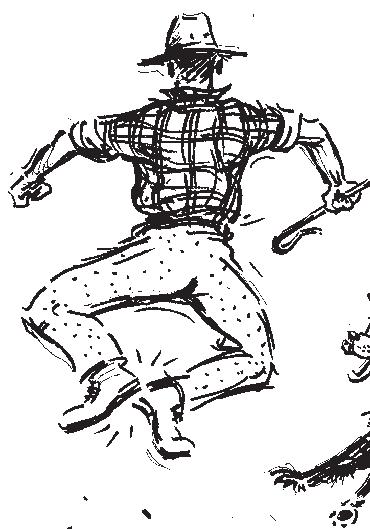

Volume 90 I January 31st, 2022 I email: agined@globalHQ.co.nz I www.farmersweekly.co.nz/agined
Are you a parent or teacher and want to receive AginED every week directly to your
email inbox? Send us an email to sign up at agined@globalhq.co.nz
CARBON


Carbon Sequestration and Carbon credits
Last week we explored what carbon is. This week we will delve into what carbon sequestration and carbon credits are and why they are such a hot topic currently.
You may have been reading stories of a number of farms and land being sold for forestry planting and conversions so that they can claim carbon credits from carbon sequestration and also have heard about the NZ Emissions Trading Scheme. Let's have a look at what each of these things are exactly.
What is carbon sequestration?
Carbon sequestration secures carbon dioxide to prevent it from entering the Earth’s atmosphere. With the aim to stabilise carbon in solid and dissolved forms so that it doesn’t cause atmospheric warming. There are two main types of carbon sequestration: biological and geological.
Biological carbon sequestration
is the storage of carbon dioxide in vegetation such as grasslands or forests, as well as in soils and oceans. Soil: Carbon is sequestered in soil by plants through photosynthesis and can be stored as soil organic carbon (SOC). It can also store carbon as carbonates, these are created over thousands of years when carbon dioxide dissolves in water and percolates the soil, combining with calcium and magnesium to form “caliche” in deserts and arid soil. Carbonates are inorganic and can store carbon for more than 70,000 years, while soil organic matter can store it for several decades. Forests: Around 25% of global emissions are captured by plantrich landscapes like forests, grasslands and rangelands. When leaves and branches fall off plants or when plants die, the carbon stored either releases into the atmosphere or is transferred to the soil. Wildfires and deforestation contribute to the diminishment of forests as a carbon sink.
While forests are commonly credited as important carbon sinks, grasslands and rangelands can be more reliable than forests. Unlike trees, grasslands sequester most of their carbon underground and in the case of fires the carbon stays fixed in the roots and soil instead of in leaves and woody biomass.
There is also Geological carbon sequestration: This is the process of storing carbon dioxide in underground geological formations, or rocks. Typically, carbon dioxide is captured from an industrial source, such as steel or cement production, or energy-related source, such as power plants or natural gas processing facilities and injected into porous rocks for long-term storage. This type of carbon capture and storage allows for the use of fossil fuels until another energy source is introduced on a large scale.
Obviously in New Zealand it is biological carbon sequestration that is currently under the spotlight. Now that we have an idea of what types of sequestration there are, let's look how that fits into the bigger picture. In New Zealand we have an
Emissions Trading Scheme
(ETS). The ETS puts a price on greenhouse gas emissions. People or organisations involved with the Emissions Trading Scheme (land owners, businesses, or those with forestry rights) can earn credits for absorb carbon dioxide (like planting or managing forests). When credits are earned they can then be: • Traded • Held on to • Surrendered back to offset activities that emit greenhouse gases (like burning fossil fuels) or reduced stored carbon (like harvesting trees) Emitters can also purchase credits to offset their emissions. To watch a short video on the ETS head to https://
www.youtube.com/ watch?v=_zFXuQoX6ps
From the information in the 2016 video: 1 What did the government allow some participants to do when the
ETS was first introduced in NZ? 2 What is an NZU? 3 Why does the government not accept international units (CERs)? 4 The video states that they were on track to meet their emission targets in 2020. Do you think this happened? Why or why not? 5 Are we doing enough to meet the 2030 goals? Are we doing enough? Too much? Not the right things? We would love to hear your opinions, flick us an email at
agined@globalhq.co.nz
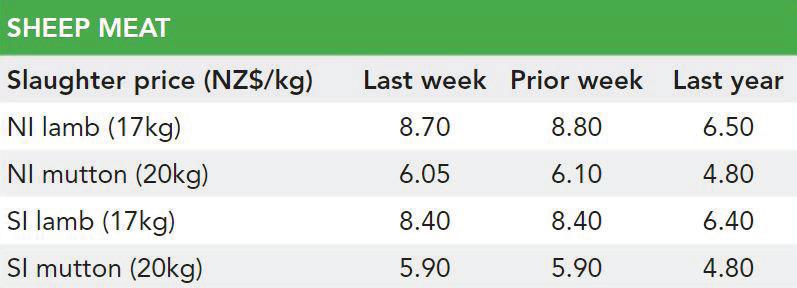
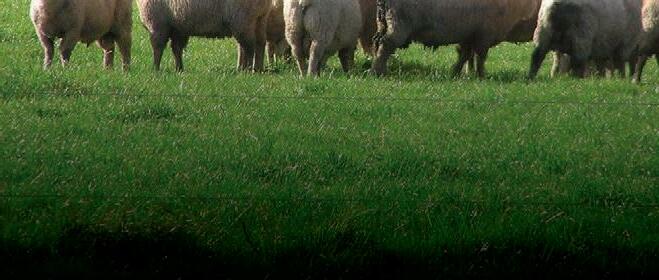
New native forests either planted or naturally regenerated after 1989, can participate in either the forestry provisions of the New Zealand Emissions Trading Scheme (ETS) or the Permanent Forest Sink Initiative (PFSI). Do some research and answer the question below. 1 What is the Permanent Forest
Sink Initiative (PFSI)? 2 What are the three main differences between the two programmes?
According to a study conducted in the UK, in order to offset the CO2 produced by an average UK citizen's food consumption in one year, 70 new trees would need to be planted. To put this into context, just 30 minutes of watching Netflix on your TV or device each day requires nearly 60 trees to be planted to become carbon neutral. According to statistics from the Global Carbon Project average per person carbon emissions are as follows:
• China - 7.4t CO2/person • Australia – 15t CO2/person • USA – 14t CO2/person • Canada – 14t CO2/person • NZ – 6.9t CO2/person • UK – 4.9t CO2/person
The world average is 4.5t CO2/person
This table shows North Island and South Island lamb and mutton values for last week.
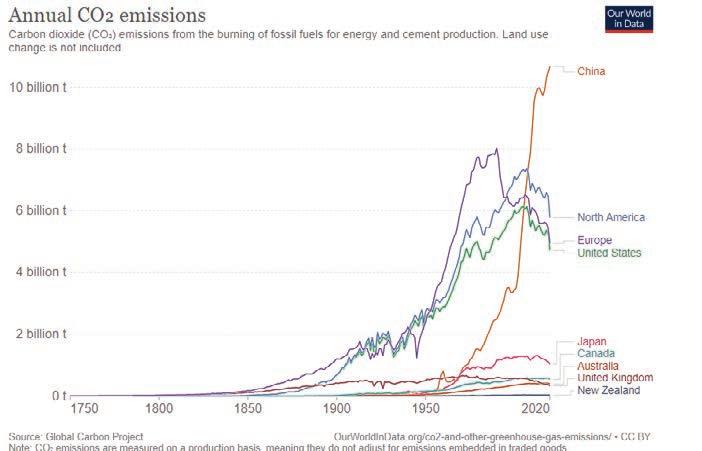


SHEEP MEAT
1 In what island are schedules higher? 2 How does each compare to the previous year? 3 What is the percentage difference between the NI lamb schedule and the previous year? 4 The North Island is experiencing longer wait times at processors compared to the South Island, how is this showing up in the values on the table? Hint:compare with the previous week for both islands. 5 There is concern that the spread of omicron may cause even more backlogs at processors. Why would this have an impact and what would this do to prices?
PODCAST CORNER:
Feed Grass for Good is a sustainable podcast and each episode speaks with a different sustainable farmer or expert to discuss their lives, lessons and challenges in the field.
Episode 5 talks with Roderick Binney, the director and owner of Glenlea Beef in New South Wales, Australia. 1 What breed does Glenlea Beef breed? 2 What benefits does this breed have? 3 How does this breed differ in Australia than the original cattle from
France? 4 What are the differences between grass-fed beef and grain-fed beef? https://farmersweekly.co.nz/s/podcasts/feedgrass-for-good
Newsmaker
Local food for local tastebuds
Opening a new restaurant in the best of times is not for the faint-hearted, let alone trying to do it in the middle of a pandemic. But Harry Faas, who recently opened a new eatery in Palmerston North, is confident that by focusing on quality produce sourced from the region he lives in, he is on to a winner. Colin Williscroft reports.
TRACEABILITY has been a bit of a buzzword in agriculture in recent years, but it’s a concept often associated with overseas markets rather than those closer to home.
However, Performance Beef Breeders (PBB) general manager, and now co-owner of Palmerston North restaurant Provenance, Harry Faas believes he’s got a take on it that will benefit local food producers and the dining public.
The restaurant, which opened in mid-December, prides itself on sourcing produce for its menu that is grown in the wider Manawatū area.
That includes Angus Pure beef from Pahīatua, lamb from Whanganui, vegetables from Bulls, microgreens from Tokomaru, milk for desserts like ice creams and sorbets from Bunnythorpe, and cheeses from the Pohangina Valley.
Faas became interested in food traceability a few years ago through his involvement with Rural Innovation Lab.
Although much of the discussion at the time revolved around the role of technology in the process, the more he thought about it, he came back to the concept of the village butcher.
He said people went to their village butcher because they were like a trusted community brand, which was an idea he thought could be developed.
At the same time in his day job at PBB, farmers were telling him that although they were doing well financially, they were unhappy about the negative perception held of them in some quarters, which was leading to a growing rural/urban divide.
“We needed a way of getting the farm back into town, to showcase what we’re doing and (what) we’ve got,” Faas says.
“I looked around and thought, ‘Actually, we have a lot of good things here (in Manawatū)’, it’s just amazing really.
“So I started forming the idea of a restaurant and a brand around it, focusing on connections with local farms and food producers.”
While he’s not quite there yet, the goal is to have everything on the menu sourced from the region.
Central to the whole operation is Provenance co-owner and executive chef Aaron Freeman, known by many for his appearance in the TV series My Kitchen Rules.
Faas says Freeman was suggested to him by Manawatū hospitality consultant Grant Kitchen.
“He (Kitchen) put us in touch and we (Freeman) had dinner together one night and just started talking about the concept,” he said.
“At the end of it we shook hands and he goes ‘Mate, I’m all in. I love this. I love this concept’.
“He’s pretty much key to the whole thing. You’ve got to get the right people on board to make it happen and Aaron’s absolutely the right person.
“He loves the whole concept of sourcing local, of gathering things up and then making beautiful meals out of them.”
Not surprisingly, setting up a hospitality business during a global pandemic has not been without its challenges.
Funding-wise a lot of lenders were risk averse, while sourcing building materials was also difficult because of hold-ups in supply chains.
“We were extremely lucky there. A week before the August lockdown all of our building materials arrived. If that hadn’t happened, we wouldn’t be open now,” he said.
Finding staff has also been tough.
“There’s a lot of people leaving hospo for other jobs that are not going to be disrupted by covid,” he said.
“We’ve been very lucky with the team we’ve got, both in the kitchen and front of house.
“They’ve all bought into the concept and it’s really exciting that they want to get involved with it.
“A couple of our chefs recently went out to an orchard in Ashhurst, gathered up a whole bunch of grapefruit and came back and created a dessert out of it.
“That’s a special that we’re running right now.
“We want to do more of that kind of stuff; the chefs love it and I think customers will too.”
It’s an example of the seasonal nature of the menu, which will change during the year, capitalising on the best and freshest produce available at the time.
The kitchen is set up to move with those changes.
He said the reaction of diners to the restaurant so far has been “overwhelming”.
It has been full for dinner service and while lunch has been slower to take off, it too is starting to build,” he said.
“What’s really resonating with people is the fact that we support local, source local. That just strikes a chord.
“People are proud because this is the region they live in and all this food is being produced here, we’re just highlighting that.
“I’ve got a feeling that postcovid it’s going to be even a bit more important … you see supply chains being disrupted, whereas we can just source local.”
It’s still early days but there are plenty of ideas being explored for development, including wild game on the menu during winter and the potential for reducing food waste by using the commercial kitchen to turn growers’ excess, such as tomatoes, into condiments like sauces.
All going well, the plan is to potentially open other restaurants around the country based on the same concept.
“We’re hoping that it will go further than just Palmerston North. This is the test case, but we really want to build on the concept,” he said.
“We have a 10-year strategy where we open another four or five if people react well to it.
“It might not be the Provenance brand, but it will be sourced local; we’ll try and stay true to that as much as we can.
“There’s opportunities there, plenty of room for growth if this works.”
Despite the tough times restaurants are facing because of covid, he is confident eating out will always have a future.
“I’ve always looked at (covid) objectively. I’ve thought it’s one of those things that the world, we will come together, we will fix it and we will move on, so I was never really scared long-term for the hospo business, because people love to go out, love to eat, love to come together.”
Harry Faas Provenance
BEEF TATAKI: 100g local premium grade Angus Pure beef fillet seared to rare, and served in a sesame ponzu dressing, with spring onions. WORKING TOGETHER: Harry Faas and Aaron Freeman are committed to highlighting local produce in their new restaurant.
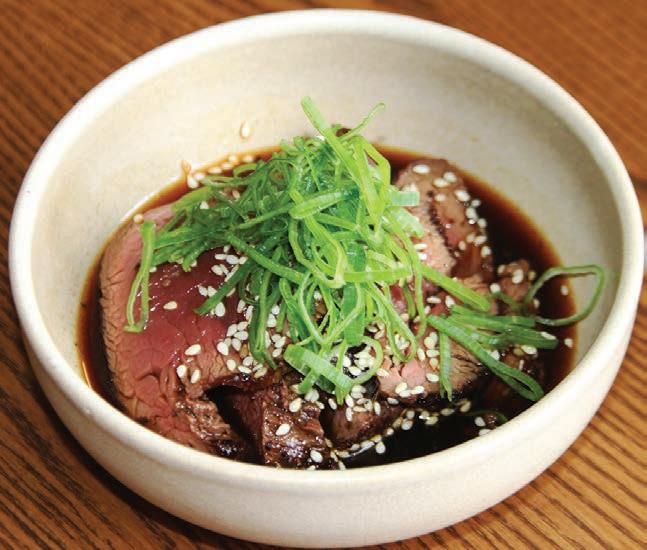
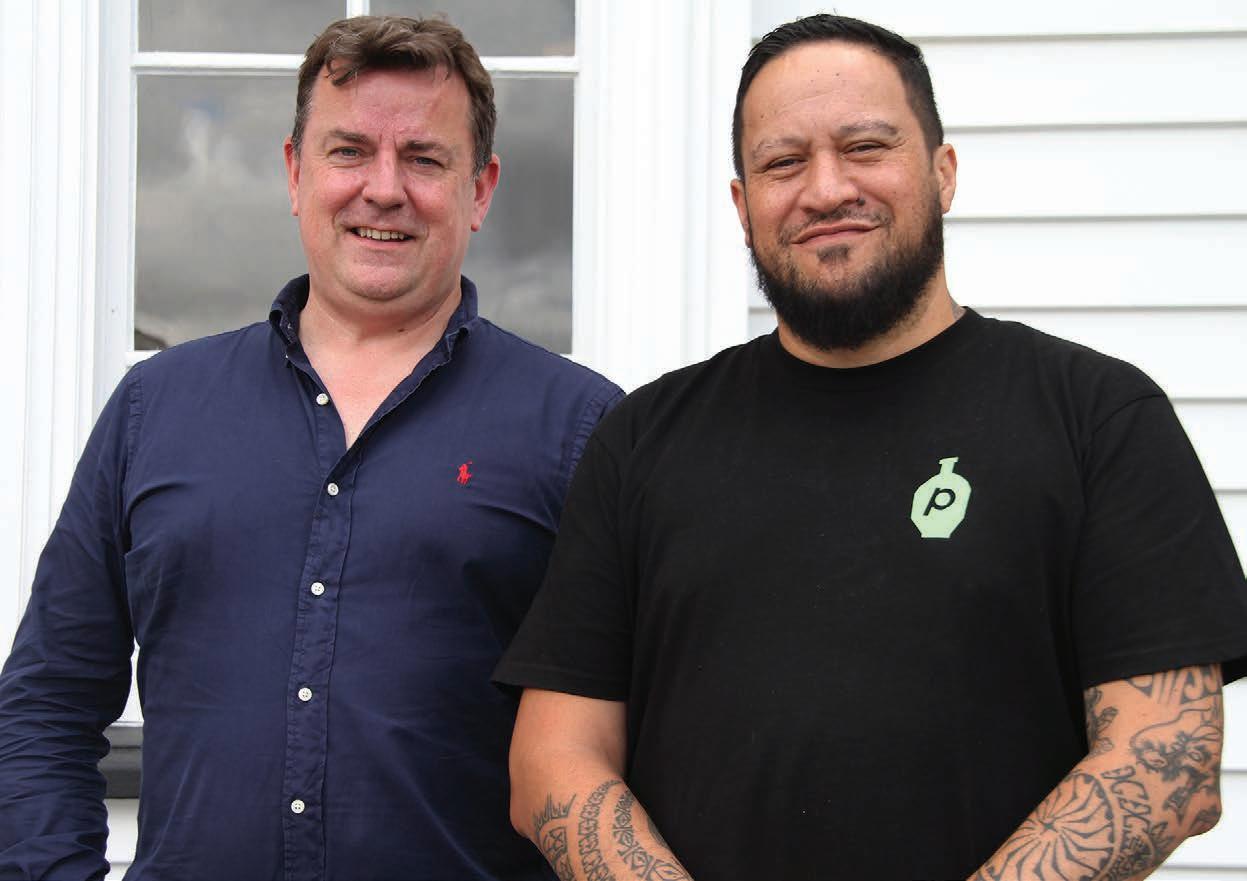

TARTARE OF BEEF: Best end of eye fillet au naturel, served classically with shallot, caper, cornichon, mustards, salt cured egg yolk, and house made crackerbreads.



